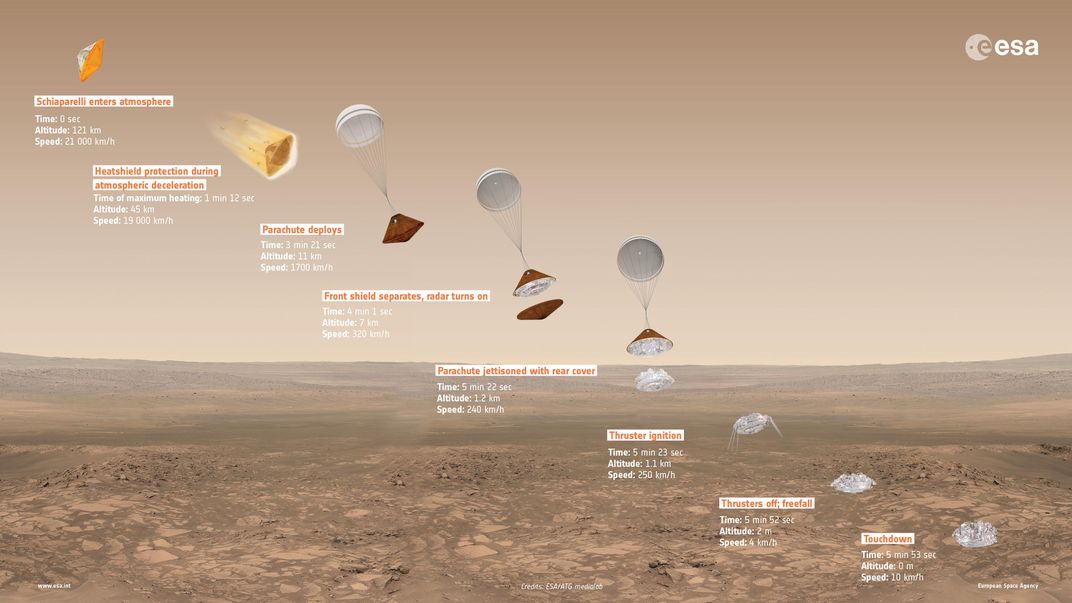ExoMars Lander Goes Silent at the Last Minute
The good news: The Trace Gas Orbiter arrived as planned and is running flawlessly.
/https://tf-cmsv2-smithsonianmag-media.s3.amazonaws.com/filer/de/a7/dea729a8-d51d-48f5-b327-e3120951fa20/schiaparelli_landing.jpg)
This was only a test, and up to the very end, it was going well. Then, in the last mile of a 308-million-mile journey, with just 50 seconds to go before touching down on the surface of Mars, Europe’s Schiaparelli landing demonstrator suddenly went silent yesterday—apparently joining a long list of spacecraft that have tried over the years, and failed, to land on the Red Planet. For the next several days, ExoMars project managers will keep trying to contact Schiaparelli with radio antennas on Earth and spacecraft in Mars orbit. But hope dwindles with each failed attempt, and orbiting cameras will also be looking for signs of wreckage on the surface. (Oct. 21 update: In fact the Mars Reconnaissance Orbiter has found what appears to be the destroyed lander.)
Now the good news. The second and more important of the two ExoMars spacecraft—the Trace Gas Orbiter built to study the Martian atmosphere—arrived in the proper orbit yesterday and is working flawlessly. Now it will begin a slow maneuvering to its final orbit, followed by two years of scientific data-taking beginning in early 2018. Scientists hope the TGO will help solve the mystery of Martian methane, which may be evidence of biological activity on the planet.
Schiaparelli was designed to test key technologies for entering the Martian atmosphere and landing, using an aeroshell, then parachutes, to slow its initial descent, followed by rocket thrusters to handle the last mile down to the surface. NASA is the only agency that has managed a fully successful landing on Mars—seven times.

Project managers know, based on engineering data relayed from Schiaparelli to the orbiting TGO, that the lander’s heat shield worked—an achievement in itself—and that the parachute deployed. But the parachute appears to have separated earlier than expected, and even though the thrusters did fire, they shut down after three or four seconds, when they were supposed to burn for half a minute. With no retro-rockets, the Schiaparelli lander would have been in free fall, and would likely have smashed on impact.
At a press conference this morning, ExoMars managers put on a brave face and emphasized TGO’s success. It wasn’t just spin. Because the orbiter captured all of Schiaparelli’s engineering data, the team hopes to reconstruct exactly what happened during the descent, and apply those lessons to the next European Mars mission in 2020, which will land a rover on the planet to search for evidence of life. Even though Schiaparelli wasn’t meant to be a destructive test, that may end up being its legacy.